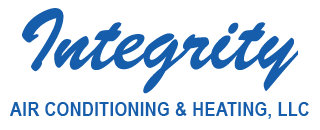
You shouldn’t be forced to compromise on comfort or empty your wallet to keep your home at a refreshing setting during the summer.
But what is the best temperature, exactly? We review suggestions from energy experts so you can choose the best temp for your family.
Here’s what we advise for the most energy-efficient setting for air conditioning in Phoenix.
Recommended Thermostat Settings for Summer
Most people find setting the thermostat at 72-73 degrees provides ideal comfort. However, if there’s a big difference between your interior and outside temps, your AC expenses will be bigger.
This is our advice based on the U.S. Department of Energy (DOE) and ENERGY STAR®.
While at home: 78 degrees. While that sounds too high, there are approaches you can keep your home pleasant without having the air conditioning running constantly.
Keeping windows and window treatments closed during the day keeps chilled air where it needs to be—within your home. Some window solutions, such as honeycomb shades or plantation shutters, are designed to give extra insulation and better energy efficiency.
If you have ceiling fans in your home, the DOE says you can increase thermostat settings about 4 degrees warmer without giving up comfort. That’s since they freshen through a windchill effect. As they cool people, not areas, turn them off when you move from a room.
If 78 degrees still appears too hot initially, try doing an experiment for about a week. Begin by upping your temperature to 78 degrees while you’re at your residence. Then, gradually lower it while adhering to the advice above. You may be amazed at how comfortable you feel at a warmer temperature setting.
While away: 88 degrees. There’s no rationale for keeping the air conditioner running all day while your house is vacant. Turning the setting 7–10 degrees higher can save you as much as 5–15% on your electricity bills, according to the DOE.
When you get home, don’t be tempted to switch your thermostat below 78 to cool your residence faster. This isn’t useful and usually produces a higher air conditioner bill.
A programmable thermostat is a good way to keep your temperature in check, but you need to set programs. If you don’t utilize programs, you run the risk of forgetting to move the set temperature when you go.
If you want a hassle-free fix, consider installing a smart thermostat. This thermostat connects with your phone, so it is aware when you’re at home and when you’re out. Then it intuitively adjusts temperature settings for maximum savings. How much exactly? Usually $180 annually on heating and cooling, according to ENERGY STAR.
Another plus of installing a smart thermostat? You can use your phone to monitor and regulate temperature settings from nearly anywhere.
While sleeping: Around 70 degrees. While ENERGY STAR advises 82 degrees, that might be too uncomfortable for many families. The majority of people sleep better when their sleeping space is chilly, so that’s why the National Sleep Foundation advises 60–67 degrees. But that may be too cold, based on your clothing and blanket preference.
We suggest following a similar test over a week, moving your temperature higher and progressively lowering it to select the ideal temperature for your house. On pleasant nights, you may discover keeping windows open at night and relying on a ceiling fan is a preferable solution than running the AC.
More Approaches to Use Less Energy During Warm Weather
There are added methods you can spend less money on cooling bills throughout the summer.
- Install an energy-efficient cooling system. Central air conditioners only last about 12–15 years and get less efficient as they age. An updated air conditioner can keep your residence cooler while keeping utility costs down.
- Book annual air conditioner tune-ups. Routine air conditioner maintenance keeps your equipment running smoothly and might help it work at greater efficiency. It might also help prolong its life span, since it helps technicians to pinpoint small troubles before they create a major meltdown.
- Switch air filters regularly. Read manufacturer instructions for changing your air filter. A dusty filter can cause your system to short cycle, or turn on and off too often, and drive up your cooling.
- Check attic insulation levels. Just about 90% of homes in the United States don’t have enough insulation, according to the Insulation Institute. The majority of southern climates need 13–14” of attic insulation, while northern climates require 16–18”.
- Have your ductwork checked. Ductwork that has separated over time can let cold air into your attic, walls or crawl space. This can result in big comfort troubles in your home, including hot and cold spots.
- Seal openings, doors and windows. Keep humid air where it belongs by plugging openings. You can also caulk or weather strip doors to trap more cool air inside.
Conserve More Energy During Hot Weather with Integrity AC & Heating LLC
If you need to save more energy during warm weather, our Integrity AC & Heating LLC professionals can provide assistance. Reach us at 602-971-0567 or contact us online for additional information about our energy-saving cooling products.


